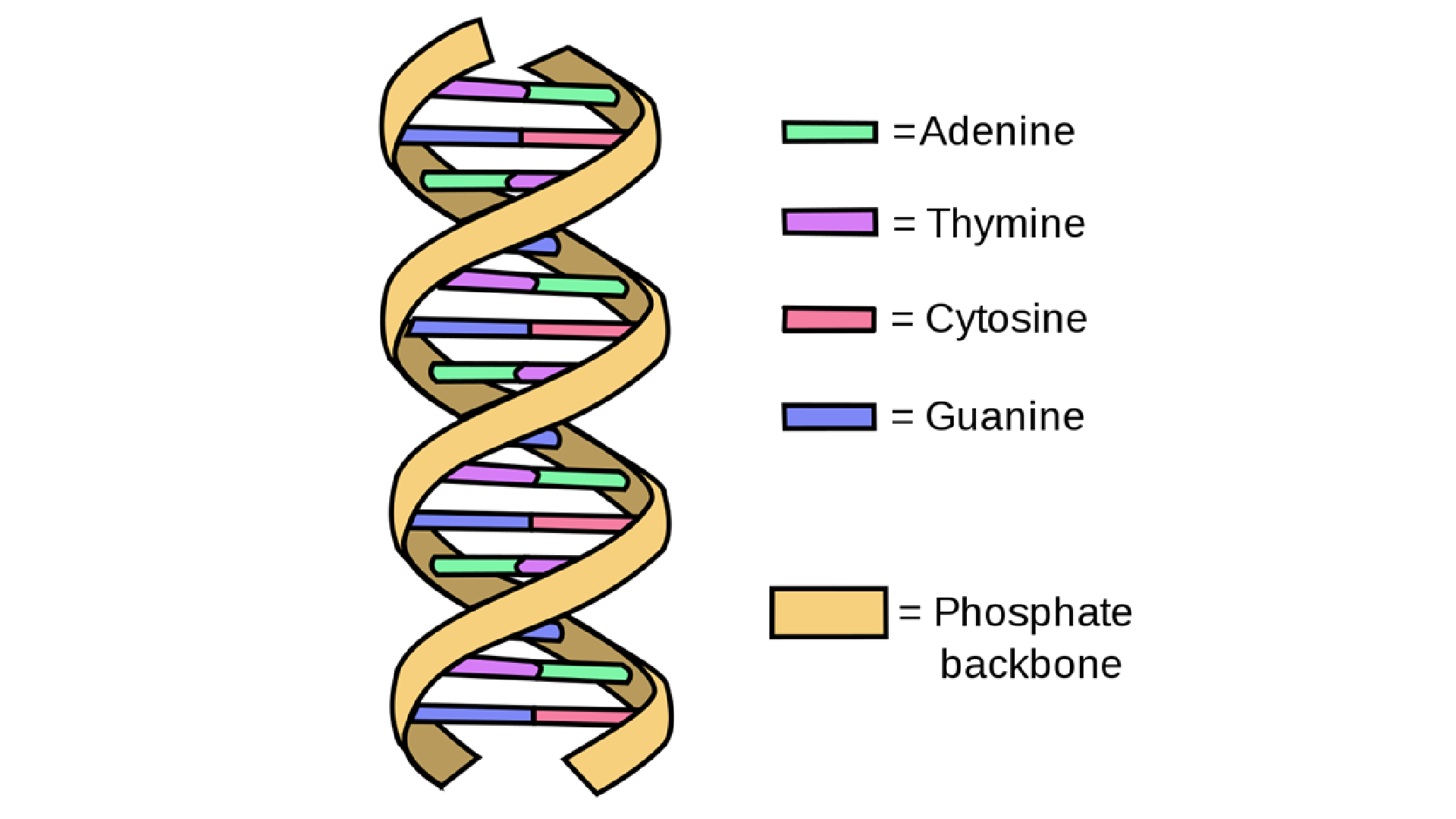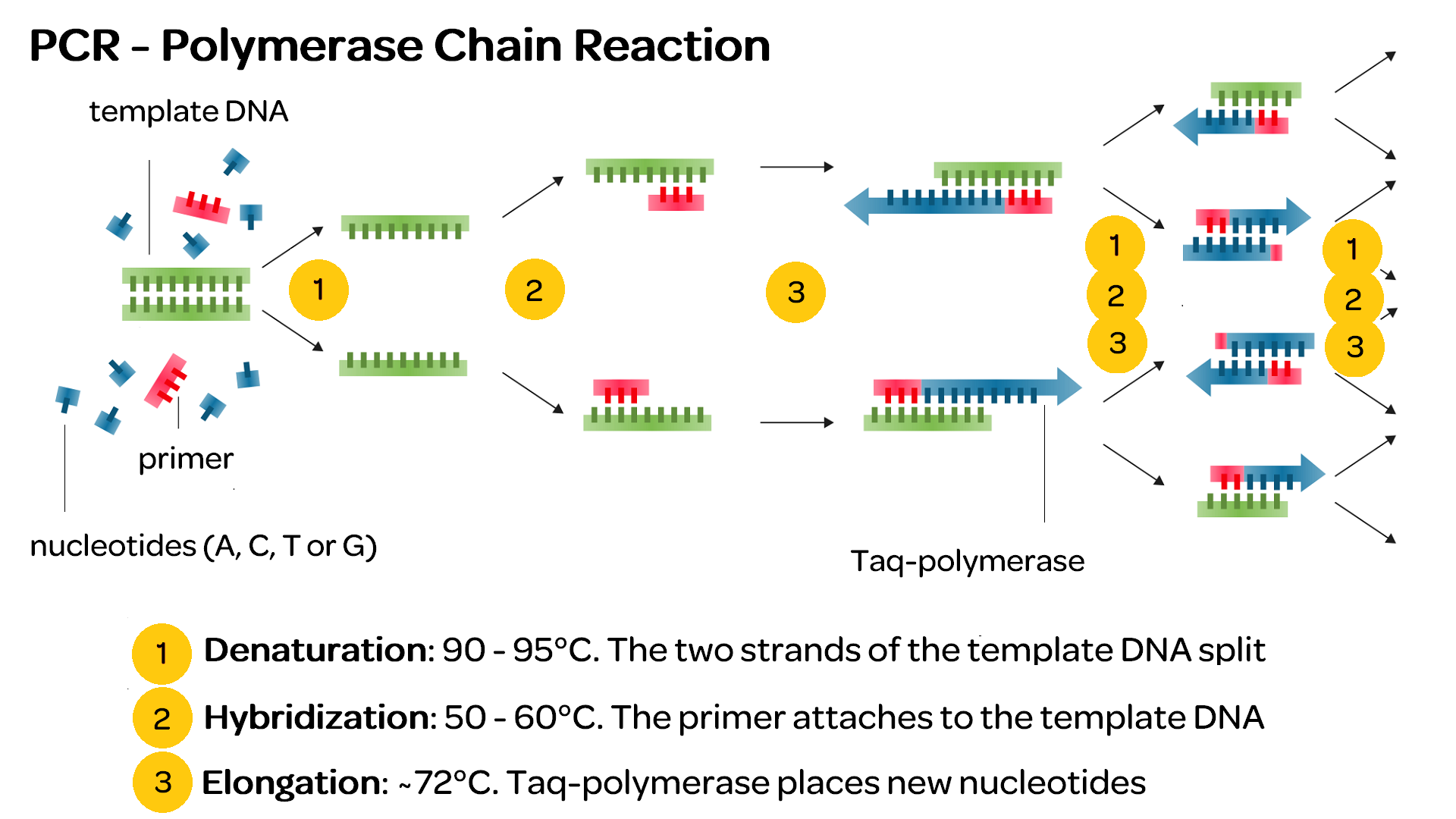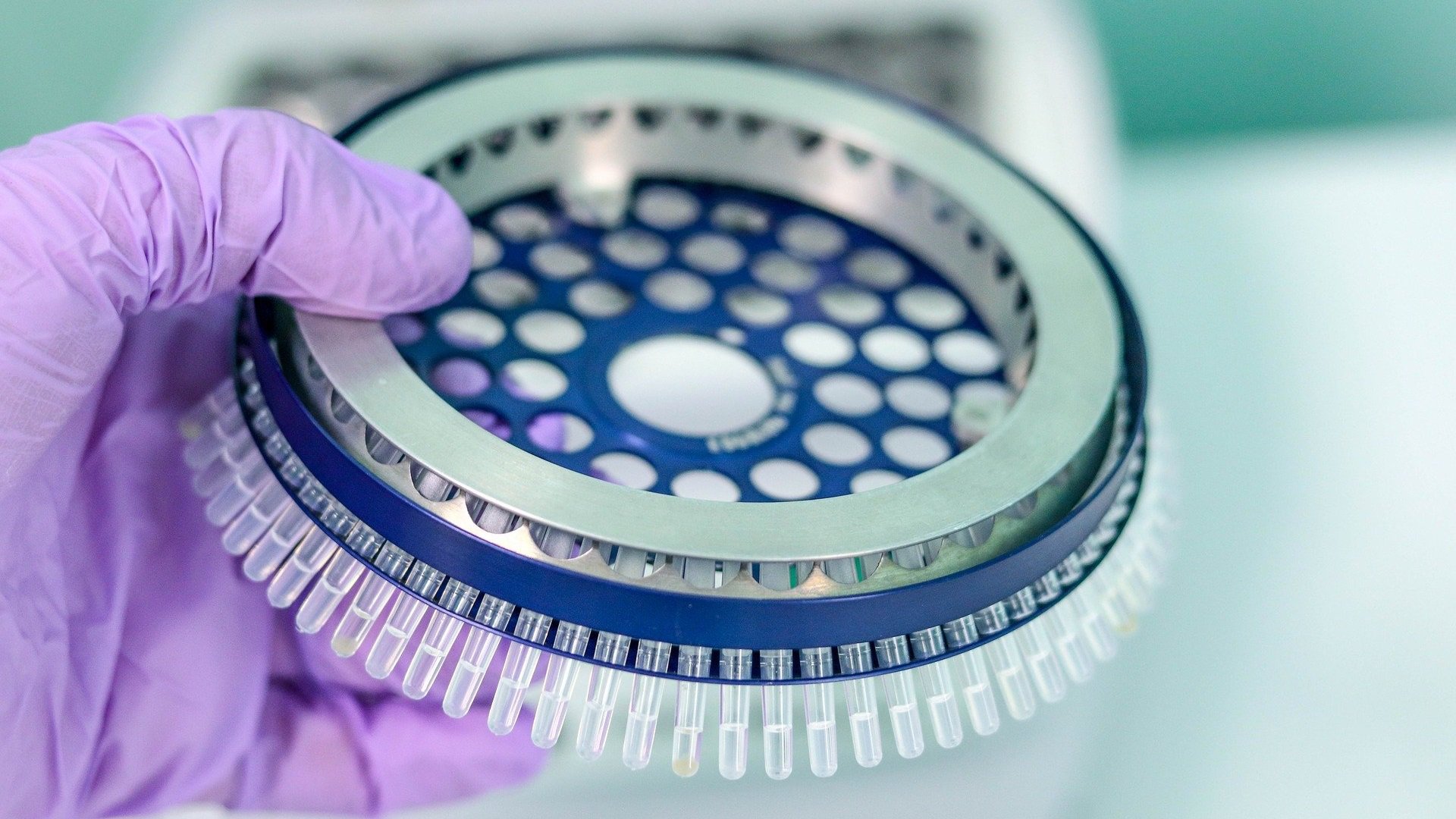PCR is a technique that is used to copy small fragments of DNA numerous times. With all these copies, one can study the genetic material of (micro-)organisms. Researchers often use PCR to identify microbes: Crime Scene Investigation at microscale.
PCR is a technique that is used to copy small fragments of DNA numerous times. With all these copies, one can study the genetic material of (micro-)organisms. Researchers often use PCR to identify microbes: Crime Scene Investigation at microscale.
Copy to multiply
All living organisms have genetic material: DNA. Microbes, like bacteria and yeasts, are very small and therefore they contain only a small amount of DNA. But a lot of information is included in that small amount. Just like humans, microbes have genes that together give the instructions for all processes that happen inside the cell. In order to study and decipher the DNA, we need a certain amount of it. This is where PCR comes in. With the help of a chain reaction at molecular scale (PCR is an abbreviation for Polymerase Chain Reaction), a certain piece of DNA is copied numerous times. By doing this, a researcher makes enough copies in order to be able to analyze the DNA.
DNA speed course
The double helix shape of DNA is familiar with a lot of people. It looks a lot like a twisted rope ladder. But lets zoom in to the structure of DNA a bit more. DNA consists of two strands, say the left and right side of the ladder. A single DNA-strand, say the left one, consists of building blocks (nucleotides). One can choose of four building blocks: Adenine (A), Cytosine (C), Guanine (G) and Thymine (T). Every nucleotide forms a new step on the half ladder. Then we have the right DNA strand, that is exactly opposite to the left strand. The reason for this is that an Adenine fits to a Thymine and a Cytosine fits to a Guanine. Therefor, you will always find a T on the right, where there is an A on the left, and a G on the right where you find a C to the left. In conclusion, the double helix consists of two strands, with complementing information on both strands. When you know the left strand, you know the right strand.

What do you need?
Similar to a cookbook recipe, one needs some specific things to do a PCR reaction. First of all, the piece of DNA that needs to be copied, the original. This is called the template. Furthermore, you need a lot of building blocks (nucleotides), in order to build the new DNA strands. You also need a so-called primer. A primer is a short piece of DNA that starts the reaction. By carefully selecting a primer, researcher can copy just the piece of DNA that they need. Finally, you need an important enzyme: Taq-polymerase. This enzyme glues the building blocks A, C, T and G to the new strand of DNA, until the whole piece of template DNA is copied.
Ready, set, copy!
The whole PCR process can be divided into three steps with difficult names: denaturation, hybridization and elongation. During the denaturation step, the double DNA helix is split into two single strands. This happens at a high temperature of 90–95°C. After this, the temperature is lowered to 50–60°C. At this temperature, the primers bind to the single strands of DNA, but only at places where they fit. This is called hybridization. Next, Taq-polymerase complements the single strands of DNA with the nucleotides, starting at the primer (elongation). After these three steps, one has two DNA helices, that both consist of a new and an old strand of DNA. All at once, you have double the amount of DNA. When the reaction is repeated, the amount of DNA multiplies exponentially. It is quite normal to repeat about thirty times. This results in about a billion copies!


